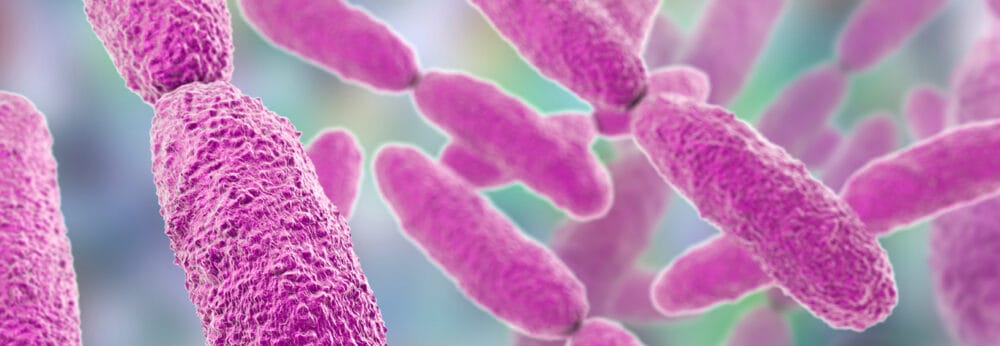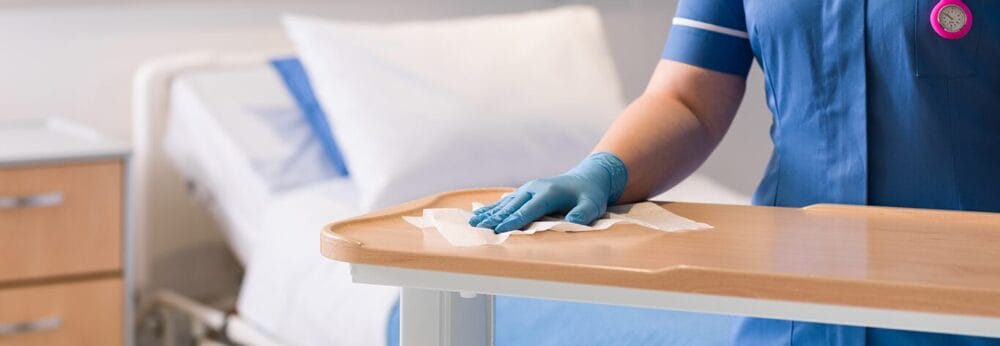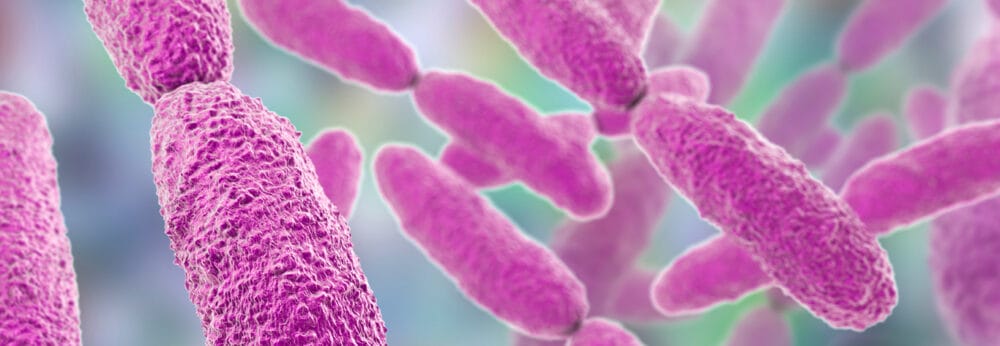Posts Tagged ‘CHLORHEXIDINE’
An interview with Martin Kiernan: education, education, education!
IVupdate have published an interview with Martin Kiernan (our very own clinical director) by Andrew Jackson of IVTeam.com, which is well worth a listen. The interview covers Martin’s career (listen out for the words of wisdom from used car sales…), proudest moments, views on patient safety, and the importance of bundle implementation. The focus of the interview is around…
Read MoreLook out: antiseptic resistance genes about!
A Turkish study has found a surprisingly high rate of antiseptic resistance gene carriage in clinical isolates of staphylococci (71% of 69 isolates carried either qacA/B or smr, which have been associated with reduced susceptibility to chlorhexidine). This study highlights the potential for bacteria to eventually develop reduced susceptibility or resistance to whatever is thrown their way! The study team…
Read MoreChlorhexidine daily bathing reduces MDRO colonisation
There is accumulating evidence that daily bathing using chlorhexidine wipes prevents the transmission of MDROs. Most of the evidence to date has been about reducing Gram-positive bacterial pathogens (such as MRSA and VRE). So a study including Gram-negative bacterial pathogens (such as Klebsiella pneumoniae and E. coli) is welcome! A recent Spanish study shows that daily bathing with chlorhexidine is effective in…
Read MoreChlorhexidine resistance: a remote risk?
A helpful US study tracked the non-emergence of phenotypic or genotypic chlorhexidine resistance associated with hospital-wide use of chlorhexidine gluconate (CHG) antisepsis. The 700 bed hospital introduced hospital wide CHG bathing in 2010, removed it in 2011, and reinstated it in 2015. They evaluated a collection of S. aureus isolates that were considered hospital-acquired and found that there was…
Read MoreUpdates on chlorhexidine from ECCMID 2017
A number of key studies were published at ECCMID 2017, providing further evidence of the utility of chlorhexidine for reducing the risk of HCAI. A study from South Korea evaluated the impact of universal skin antisepsis using 2% chlorhexidine gluconate (CHG) washcloths in reducing MRSA acquisitions and bloodstream infections. Following a 12 month baseline period, a two-year…
Read MoreChlorhexidine crosses the line ahead of the competition in preventing catheter related infections
A randomised controlled study with a clinical outcome compared the impact of chlorhexidine, octenidine, and povidone iodine used for cutaneous antisepsis for preventing line infections associated with intravascular catheters. Chlorhexidine knocked spots off the competition, with patients randomised to chlorhexidine significantly less likely to develop line-relates sepsis or bacterial contamination when compared with octenidine or povidone iodine.…
Read MoreDaily chlorhexidine bathing works in a high prevalence MRSA ICU setting
A recent Korean study underlines the value of daily chlorhexidine bathing, demonstrating a reduction in the trend of MRSA incidence in a high-prevalence ICU setting. The study also underlines the threat of reduced susceptibility to chlorhexidine emerging, which may begin to erode gains that have been made through the introduction of chlorhexidine. The study was performed…
Read MoreChlorhexidine daily bathing reduces infections: multicentre study in the US
An ambitious study involving ICUs in 33 community hospitals in the US over a period over five years evaluated the impact of chlorhexidine (CHG) daily bathing. ICUs in 17 hospitals implemented CHG daily bathing, whereas 16 ICUs did not, and served as controls. The study evaluated any potential changes in a host of infection-related outcomes, including CLABSI,…
Read MoreShocking news about chlorhexidine
There is some evidence that passing electricity through a biocide enhances its biocidal activity – a so-called ‘bioelectric effect’. At the molecular level, biocidal activity depends on some sort of chemical interaction at a molecular level. Things tend to happen more quickly in chemical reactions when you add more energy – to a point. And…
Read MoreEvidence of source control for XDR Acinetobacter outbreak management grows
There is a steadily growing body of evidence that chlorhexidine washcloths can be effective in controlling multi-resistant Gram-negatives. Hot on the heels of a paper that demonstrated the effectiveness of the in controlling spread of Acinetobacter in a critical care unit1 comes a further paper relating to a hospital-wide outbreak of multi-resistant Acinetobacter. A new paper2 from Gray…
Read More



